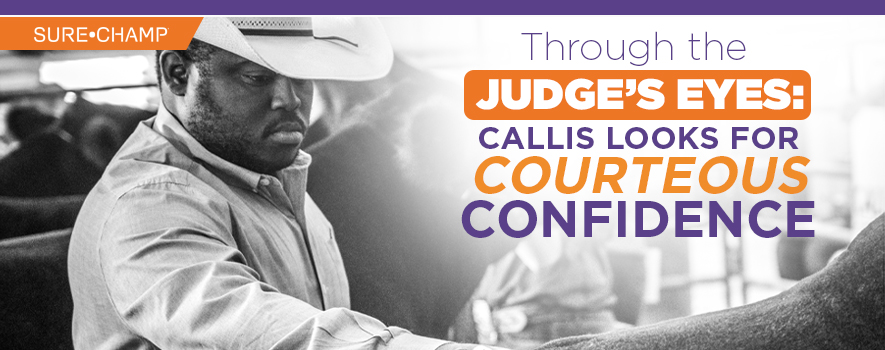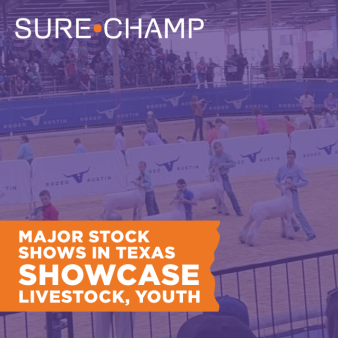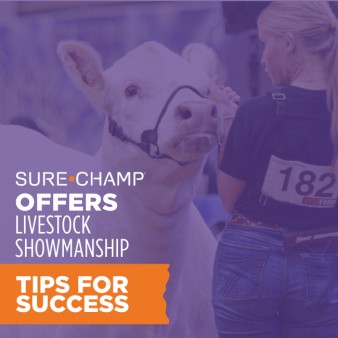
Brandon Callis is no stranger to the show ring or the cattle industry. He grew up with grandparents who raised both registered Brahman and commercial cattle in South Texas, and his dad was a 4-H Extension Agent, demonstrating at a young age how to make an impact on youth. Callis was active in 4-H and FFA and showed several of the smaller species like sheep and hogs early in his career, but when he was in the fifth or sixth grade, his dad got him his first show steer, which he admits was probably his dad’s “worst financial decision for himself.”
“It just took off from there,” said Callis, who is now a professor and livestock judging coach at Redlands Community College and also runs about 100 Simmental and club calf mama cows with his wife, Kelly, and their three children at Minco, Oklahoma. He recently took some time to discuss what he looks for in the cattle show ring.
The Cattle
“Nobody ever wants to take a picture with an ugly one. So, I want them to have some type of look and quality. And quality goes hand-in-hand with correctness of skeleton,” Callis said.
Callis is a self-proclaimed fundamentalist when it comes to evaluating and sorting breeding cattle, saying that the cattle have to be able to look good, with structural correctness and function as his highest priorities when judging heifers.
“A heifer is going to have to perform and have the right kind of body dimension to sustain her entire productive life, and the right kind of structure to get up and go and navigate whatever terrain she is in and get to a feed source and water source,” he said. “When we do get them in the show ring, and probably with my background in evaluation and love for building things, I like to see them as correct in their feet and legs and structure without sacrificing that productive width and dimension.”
When it comes to market evaluation, it is of the upmost importance to remember that those animals are designed to be market animals, so they need to look the part. Callis puts his emphasis on muscle expression.
“They need the ability to become fat steers, so doability or their ability to convert forage or feed to what they need to be productive becomes important. And then again, if they can do all of that in a structurally correct, sound, quality package, that is important,” he said.
When asked if he had a preference between the slick-haired cattle shown in Southern Texas or the haired up cattle he found up north, he said there was no preference, but definitely an obvious difference. He feels fortunate that he’s experienced showing and judging all types of cattle, having been raised in South Texas, but having completed his master’s degree at Kansas State. The noticeable advantage are the southern cattle are bred to be naturally thicker and heavier muscled, according to Callis, and the steers up north are typically a growthier, higher-performing animal.
First Impression
“Courteous confidence” combined with passion are two traits Callis looks for when an exhibitor leads his or her calf into the ring. He wants to see the drive in an exhibitor and know that they desire to be in the ring with their project, not that they are just living through mom or dad or showing one of a dozen steers or heifers in the barn just to check one off the list.
He said one way to keep them passionate is to not get them burned out on showing, especially at an early age, just like preventing burn out is important with any extracurricular activity like sports or music. Let them focus on showing one or two animals a season instead of six or eight or 12.
The courteous confidence that Callis describes is a combination of confidence that comes from at-home preparation and knowing what is happening around the exhibitor in the show ring.
“I like to see kids that are naturally confident, and I know confidence comes from preparation. You can be confident in showing that animal because they put in that time at home, and I say courteous, because I like them to be aware of their surroundings. If there is a less experienced exhibitor in front of them with a calf that is acting a little rambunctious, you don’t have to crowd that one as much or give it some more space or be on the lookout for that one a little bit more. Or if it is balking in the middle of the ring, don’t just expect the ring help to help it out, but you can help it out, too,” he said.
Advice & Inspiration
“Be patient, and fight through the wall,” is the advice that Callis offers.
He often tells his judging teams there will be times in their competitive lives and in life in general where they will hit a wall, stop making progress or simply go backward. Those are the times, he said, it would be easy to quit.
“I’ve often times thought with my faith background, those are the times that God is preparing me to buckle up and get tougher; He’s expecting a little more out of me. So be patient, and don’t get so frustrated that you want to quit. Keep tearing down that wall because it is going to fall down.”
“I never got to win a show when I was a kid. But I thought His plans were bigger for me. And I got to do a lot of things I never thought I would get to do,” he said.
Callis has judged shows in more than 30 states. He doesn’t take that for granted and is grateful for parents who instilled work ethic and a love of livestock into him. He said he’s also fortunate to have found a spouse who shares common values with him.
“All my success started with my parents. There is not a bigger-hearted, harder working person in the world than my mom. My dad has got a natural love for livestock and treating people the right way. And when I met my wife, the first time we talked on the phone, we talked about Jesus and cows, so I realized pretty quickly, we’d get along well, and she’s been a good constant for me as challenging me and pushing me and when I am gone, she’s able to take care of 100 cows and three kids by herself and doesn’t even sweat doing it. That inspires me to do what I’m doing the right way for the right reasons.”
For this cattle evaluator, it all starts with the fundamentals. Those fundamentals are structurally correct cattle that get worked with at home by confident, courteous exhibitors. The fundamentals of family and faith keep Callis grounded. His perspective is fresh and one that can help all exhibitors #PreptoWin in and out of the ring.

